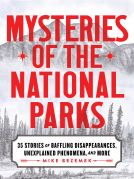
Atlas of Forgotten Places
Journey to Abandoned Destinations Around the Globe
by Travis Elborough
This title was previously available on NetGalley and is now archived.
Send NetGalley books directly to your Kindle or Kindle app
1
To read on a Kindle or Kindle app, please add kindle@netgalley.com as an approved email address to receive files in your Amazon account. Click here for step-by-step instructions.
2
Also find your Kindle email address within your Amazon account, and enter it here.
Pub Date Dec 07 2021 | Archive Date Jan 20 2022
Quarto Publishing Group – White Lion | White Lion Publishing
Talking about this book? Use #AtlasofForgottenPlaces #NetGalley. More hashtag tips!
Description
From ancient ruins and crumbling castles to more recent relics – an art deco New York subway station, a Soviet ghost town in the Arctic Circle, a flooded Thai mall teeming with aquatic life – Travis Elborough takes you on a journey into these strange, overlooked and disappearing worlds and immortalises their fates.
Original maps and stunning colour photography accompany Travis Elborough’s moving historic and geographic accounts of each site. The featured locations are a stark reminder of what was, and the accounts in this investigative book help to bring their stories back to life, telling us what happened, when and why, and to whom.
The book features 40 sites, including:
- Santa Claus, Arizona, USA: A festive tourist resort turned ghost town deep in the desert where once you could meet Santa Claus any day of the year;
- Crystal Palace Subway, London, UK: One of the city’s best-kept secrets is an underground, cathedral-like relic from where many Victorian commuters bustled through;
- Montserrat, West Indies: The small Caribbean island with a population of 5,000 that was evacuated when its volcano erupted in 1995. The volcano is still active and nearly half the island remains a designated exclusion zone;
- Balaklava Submarine Base, Crimea: The former top-secret Soviet submarine base that was kept off all official maps and known as Object 825 GTS;
- Volterra Psychiatric Hospital, Tuscany, Italy: Once dubbed ‘the place of no return’, this long-closed lunatic asylum once housed 6,000 patients who were never allowed to leave.
Available Editions
| EDITION | Other Format |
| ISBN | 9780711263307 |
| PRICE | $30.00 (USD) |
| PAGES | 208 |
Featured Reviews
Absolutely fascinating reading! A trip through time and around the world in abandoned towns, buildings, and sometimes entire nations, this book features maps and interesting photography of these ghostly ruins. Some were lost to war or nature and others to obsolescence or even "progress". Each one has a compelling story to tell about the people and society is served and reflected.
While it's explained well in the accompanying text, I would have loved if the dates of construction/settlement and destruction/abandonment could have been included in the header for each article, just for easy context. Otherwise, this is excellent reading and would be of great interest to any history buff, architecture fan, or travel enthusiast!
Many thanks to the publisher and NetGalley for the opportunity to read and review!
 Carrie W, Reviewer
Carrie W, Reviewer
I love the history behind each landmark, the photos that accompany it and finding out how these places are being used now!
 Alyssa M, Reviewer
Alyssa M, Reviewer
I received a copy of this book through NetGalley in exchange for an honest review.
This is an interesting book!
It's a coffee table book that dives into abandoned places. The places are grouped together by similar types and not geography, so you have places in the US next to places in Namibia which makes it an interesting experience to read through.
There are pictures of each place as well as a map showing you where it is. There's history and stories about each place that give context. The book focuses on places like abandoned subways, old factory's, and unused orphanages.
A haunting but interesting read.
These pictures and stories in the book are incredible. Some of these places look like people just left and should be back any minute. Others look creepy and abandoned for a reason. I loved the stories behind all the places. Very interesting read.
 Rosemary S, Librarian
Rosemary S, Librarian
An eerie, fascinating book that takes readers around the world and through time on a journey to places humans once gathered, but have now abandoned. Photographs capture ruins of hospitals, subways, military bases, entire towns and even small nations. Beautiful, creepy and informative, this is a book for urban explorers who prefer to explore from the safety of their own home
What a cool book! A great gift to the friend who always explored the empty cabins in the woods, the dilapidated building down the block, the crumbling hotel when you were on vacation.....
Via the Atlas, you will be able to explore "the places that time forgot" abandoned famous international spots.
The photos are amazing as you take in ancient ruins and castles as well as more identifiable spots such as – an New York subway station,. The very strange is uncovered in a flooded Thai mall filled purposely with fish!
Maps and photography accompany very clear descriptions of the spots and their history. If you are someone who travels internationally, you will surely include some of these places in your next trip!
If you like Weird New Jersey (as I do) or follow the local legends in your own town or state. This is a book for you! I've posted the some of the 40 sites listed directly from the book for you here:
Santa Claus, Arizona, USA:
Crystal Palace Subway, London, UK:
Montserrat, West Indies Volcano
Balaklava Submarine Base, Crimea:
Volterra Psychiatric Hospital, Tuscany, Italy
Check this book out ! and buy one for a curious friend! #NetGalley #AtlasofForgottenPlaces
 S T, Reviewer
S T, Reviewer
"Atlas of Forgotten Places" by Travis Elborough thoroughly documents 40 abandoned locations throughout the world. Although about half of these are in Europe, forgotten places in Africa, Asia, the Americas, and the Arctic Circle are included. Featured locations include ghost towns, castles, hospitals, hotels, light houses, islands, airports, nuclear power plants, malls, churches, and prisons. The descriptions are both encyclopedic and thought provoking as they include history and broad cultural. background. The accompanying pictures are impressive, stunning, and certainly catch the eye. The maps are accurate and useful. Given an opportunity, it would certainly be interesting to explore these out of the way locales.
I would like to thank the author and publisher for kindly providing a temporary electronic copy of this book to review.
 John L, Reviewer
John L, Reviewer
Travelling by coach, or even flying coach, has become much less common as an activity in the 2020s, what with one thing and another. Any more of that sort of thing and the likes of Heathrow will get to look sullen, unlikeable and jaded – I mean, who'd ever have thought a transport hub could have the neglected and unwanted feel? But never mind those – we're concerned here with the destinations, and the more condemned-looking, run-down and from-a-time-long-gone the better. Places like Sans-Souci, and, er, Plymouth.
This is one of those instances where I know full well youtube has multiple channels devoted to the stuff, but I still have to rate most highly this and all the other books in this series I've seen. Finding the romance in the decrepit, this gives us just four or six pages to tell us all it can about its sites, letting us see in one three-subject swoop the life and death of, in order, villages associated with Hitler's childhood, the British seaside pier, and Santa Claus, no less. Sometimes the maps are a little too prominent, when some further example of the exemplary photography might have been chosen instead, but these postcards from the past are once again top notch entertainment, and ideal for dipping into while confined.
I will have to say that my digital preview really needed the virtual red ink on some wonky sentence construction, and I will have to say it's not THE Sans-Souci or Plymouth you may expect. But I also have to say I do like these books a lot. Four and a half stars.
 George S, Media/Journalist
George S, Media/Journalist
A really enjoyable book with beautiful photographs and excellent maps depicting fascinating but little-known locations around the world. Perfect for the armchair traveler
Atlas of Forgotten Places explores 40 sites around the world that time and we humans forgot.
Abandoned castles, ancient ruins, hospitals, orphanages, military bases, subway stations and even entire towns are beautifully archived by Travis Elborough and his team. Through original maps, stunning colour photography and detailed accounts, the Atlas takes readers on a time and space journey to rediscover eerie, haunting and disappearing locations.
My only critique would be the writing style which was at times very lengthy. A few sentences could go over six lines, making the reading experience less natural and easier to be distracted. Atlas of Forgotten Places is nonetheless a great reminder of the many vestiges that marked our society and history, bringing back to life 40 sites that were once filled with life and purpose.
The latest instalment in the Unexpected Atlasas series. I've enjoyed these books so far, in particular, the Atlas of Vanishing Places so I was looking forward to reading this.
The book follows a similar format to the others, a place is presented with information, a map and some photos. In this instance, the focus is on places around the world that have been abandoned and forgotten. There is a good mix of both modern and ancient, e..g forgotten subway stations, ghost towns and ancient ruins.
This book is one of those quintessential 'coffee table books that are fun to dip in and out of or to show to guests. It perfectly achieves what it sets out to do through its engaging design and attractive pictures. The information is detailed enough to pique one's interest without getting bogged down in detail.
 Amelia E, Reviewer
Amelia E, Reviewer
A fascinating book that's great for dipping into.
As the title suggests, this book highlights all kinds of places that have over time been abandoned and mainly forgotten. These range from buildings to whole villages, tourist attractions and transport terminals such as airports and train stations. I found it so interesting. Each abandoned place gets a couple of pages with a brief history, the reasons it was abandoned, and some great photographs, sometimes showing it now and occasionally how it looked in the past. I was impressed by the level of detail fitted in to a few columns of text and I wanted to go and see most of the places for myself. These days a lot of us are armchair travellers and I definitely recommend this book for that, but I'd also check it if I was going travelling so that I could include some of the sights mentioned. A really nice book that would make a good gift.
My thanks go to White Lion Publishing and Netgalley for kindly providing me with an arc, I really appreciate that.
 Jessica F, Reviewer
Jessica F, Reviewer
I loved this book. Detailing abandoned places all over the globe, each entry contained text, photos, and maps. Some contained, if available, original drawings of what the building was designed to look like. What I really loved about this book was that it framed both the construction and abandonment of each of these places in the context of why the society needed them and then why the society chose to leave them in the past. It was a well done and very educational book.
These are beautiful books, even in electronic copy - this Atlas of Forgotten Places, and the Atlas of Improbable Places; I'm sure they're even more lovely in paper. That's definitely a key thing to note. The photography of each place is generally very good, and evocative of whatever idea is being presented; and the maps are also intriguing. They show where the place is in context - near other towns or within a country or whatever is relevant - and also shows the layout of the particular area. Because with this Atlas in particular, I think, many of the places featured aren't just individual buildings (although there are plenty of those); they're also entire towns, or bits of towns. And the maps show what still exists, what's crumbling, what's changed over time. They're really well produced.
Chapters includes Vacant Properties, Unsettled Situations (abandoned towns, largely), Dilapidated Destinations (tourist spots and hotels), Journeys Ended (airports etc), and Obsolete Institutions. Sometimes the categorising is a bit of a stretch, but I'm happy enough to go along with it. It closes with Alcatraz, which I thought both amusing and fitting; there's a town called Santa Claus, a lighthouse, several hotels, and a Bangkok mall, as well.
I have two quibbles. One is an admittedly minor irritant: the book needed slightly better editing (ashes are interred, not interned, surely). The other is that sometimes most of the entry for a location is a digression - about Napoleon, when the entry is about something on Corsica, or about why an indigenous group where bowler hats when it's about a railway in Bolivia, or how both cardigans and balaclavas were named for military things (a man and a place) associated with the Crimean War, when it's a submarine base in Balaklava. If you're going to feature a place, surely you should spend your two-ish pages talking just about that place? Expanding more on what it was like and what led to its being forgotten? It made me wonder whether Elborough was padding for the sake of making each entry about equal, and pointless words really, really annoy me.
I should also note that the list of places mentioned in the blurb on Goodreads is wrong - three of the places mentioned there do not actually feature in the book that I read (I doublechecked the index and everything). So if you want to read about the abandoned Peter's Ice Cream Factory, it's not in this book.
Those quibbles aside, though, I have no trouble recommending this for the armchair traveller, or the lover of quirky facts.
 Sarah T, Educator
Sarah T, Educator
This is a great coffee table book! The history that accompanies each location is fascinating and the pictures just add to the allure.
Thank you to NetGalley and the publisher for this ARC in return for an honest review.
 zeb k, Reviewer
zeb k, Reviewer
Like a book on archaeology, this book pictures abandoned building all over the world. These buildings all had a purpose at one time but like a Tuberculosis Hospital has lived past its' time. Since most of these were specialized structures, they were impossible to re-purpose in most cases they have been left to disintegrate and the encroachment of nature.
Many of the structures are photographed in their current states with professional style.
Author Travis Elborough packs a lot of information into his book, Atlas of Forgotten Places. Describing 40 different abandoned locations, the reader gets a brief overview of its past, present and sometimes future. With only a few well-known places on the list, the majority of the locales bring us to remote islands and countries. The photographs accompanying each story along with a map of the area make this an interesting read for those into history and geography. There are all sorts of reasons why a locale becomes abandoned; this book provided an informative little glimpse into all of them.
I received an arc of this book in exchange for my honest opinion. What I could see was really gorgeous. I think abandoned/forgotten places are really hauntingly beautiful, and these places were no exception. The book provides beautiful photos, helpful maps, and 2-3 pages of information about each location.
Unfortunately, I wasn't really able to read the text very well due to the font size and formatting of this ARC. That's disappointing, because based on what I *could* see, this book was really lovely.
#NetGalley
 Ashleigh R, Librarian
Ashleigh R, Librarian
I really enjoyed this book! You can tell that it was well researched and I loved getting all the background history of each abandoned place. The photographs were beautiful, and I liked having the maps to refer to. This is definitely a good read for people who are into history or people who are found of urban tourism or exploration.
Atlas of Forgotten Places by Travis Elbourough is a book that takes us on a journey around the world to discover all kinds of abandoned or forgotten places.
While I don't usually find this kind of book interesting, I found myself very much absorbed in this one.
The selected places were engaging, the pictures breathtaking, and the maps representative.
The one setback for me, though minor, was the sometimes difficult vocabulary, which I imagine could be a problem for some.
A great book altogether, especially for geography and travel enthusiasts.
I received a free digital copy of this book from Netgalley in exchange for an honest review.
Atlas of Forgotten Places is a quality coffee table book focused on uninhabited locations throughout the world. These places became uninhabited in a variety of ways. The pictures were absolutely stunning and the summary of each location was 1-3 pages long, giving enough detail for you to learn something new, but short enough to pick up and learn about a couple of locations during a few minutes of downtime. I found the stories of Plymouth in Montserrat, Dollersheim in Austria, and Akampene Island in Uganda to be thoroughly interesting and each was a new location I wasn't previously familiar with. Highly recommended, especially for the history buff.
Books just don't get more fascinating, enthralling and beguiling than this...not only does Travis Eldborough include the history, geography, purpose(s) and those who lived/worked in forty abandoned places all over the world but the photography is nothing short of magnificent. I pored over the maps as well. As an adventurous international traveler, nothing intrigues me more than exploring abandoned places, wondering what they were like in their heyday with people going about their daily business.
The author begins by defining "abandoned" and "forgotten", thought provoking indeed. He also writes that some of these sites are not worth mourning (some built for nefarious reasons) but ALL are worth remembering. Some are eyesores, others enchanting, all worth reading and knowing about. Some were abandoned hundreds of years ago, others more recently.
Amongst others, included here are the wooden orphanage in Turkey which signified thousands of abandoned children, the Pyramiden mining town in Norway, the Rubjerg Knude Lighthouse in Denmark (connections to Canute), the former Soviet military barracks in Germany, the ancient town of Al-Ula in Saudi Arabia (incredible that it still stands!), grand Hachijo Royal Hotel in Japan with its stunning setting and the hideous Camelot Theme Park in the UK, Volterra Psychiatric Hospital in Italy with its own aqueduct kept people within its walls before asylums became outdated. The wall carvings are particularly moving. So is the poignant description of Punishment Island.
Amongst my favourites is Sammezzano Castle in Italy with its riveting Latin motto, lovely exterior, rich interior and majestic forest, just begging to be explored. It reminds me of various places my husband and I explore regularly in Croatia, Written history may be scant but buildings speaks volumes! We have yet to explore Kupari, Croatia, which is described in this book, loaded with history.
Whether you are a traveler or not, you will most certainly learn a lot from the gorgeous Atlas of Forgotten Places. Ideal for those who are besotted with maps! All you need is a thirsty mind.
My sincere thank you to Quarto Publishing Group and NetGalley for the privilege of ogling and reading this wondrous book!
Elborough writes beautifully and thoughtfully. I loved, in his introduction, the explanation of the term "quarantine" (and drawing parallels between 40 days on Poveglia and Jesus' 40 days in the Judean desert). Similarly, I loved the exhortation to look back on the past and, in turn, "think longer and harder about the world to come and what might be worth salvaging from the wreckage" (eARC introduction).
The book proves educational and insightful, as well; did you know, for example, that Chernobyl is not the only abandoned nuclear power plant? (Enter Zarnowiec, in Poland.) Granted, different reasons gave cause for abandonment at this site, but the end result was the same. And then there's the downright beautiful, like Sammezzano Castle in Tuscany--ohhh, I'd love to visit that! (Same goes for Kennecott, Alaska, one location that at least geographically seems more reachable for me here in the US. Surprisingly, a lot of US locations are included--just goes to show my knowledge is by no means comprehensive!)
I found it interesting that a number of places now abandoned had some kind of Soviet connection. Not sure if that was intentional during the author's selection process, or just luck of the draw!
Each location features sizable maps; helpful on the one hand, but on the other, I almost wish the maps were smaller, with more photographs included. Some locations had 3+ photos; others had 1, and I often found myself wanting to see more of the actual facility/grounds in lieu of a map (or at least more photographic equity?)..
Brighton's West Pier was a surprising addition; I've been reading a fair bit of Jane Austen over the last year or so--in fact, just today finished listening to a production of _Mansfield Park_--and Brighton often merits at least a passing mention there. The "skeletal shell" is sobering!
A fascinating and thought-provoking read. 4/5 stars.
I received an eARC of the book from the publisher via NetGalley. All opinions are my own.
The Atlas of Forgotten Places by Travis Elborough. This is a fascinating and informative book, perfect for lovers of Atlas Obscura and the like. The author takes you all over the world to visit unique site. Complete with maps, photographs, and historical information, this is a book I will plan to buy in hardback.
“From ancient ruins and crumbling castles to more recent relics – an art deco New York subway station, a Soviet ghost town in the Arctic Circle, a flooded Thai mall teeming with aquatic life – Travis Elborough takes you on a journey into these strange, overlooked and disappearing worlds and immortalises their fates.”
Thanks to @netgalley and @whitelionpublishing for the opportunity to read and review this book.
This was a rather intriguing book. The pictures are beautiful even though the subject matter is often not in the best condition. The subjects of forgotten or abandoned places that still exist is an interesting one from a historical standpoint of what they were used for, how did they come to the state they are in now and what might their future look like.
What a volume of heartbreaking beauty! Some of the places highlighted here are in remote, rural areas, others stand in the middle of cities, a few even underground, but they all have in common that they were once important but have now been forgotten. The book is full of pictures that evoke the awe, or horror, these places once held. But there is beauty in the desolation. Some of these places have been taken over by nature. The photographs are accompanied by brief but complete descriptions of the places, their past importance, and the historical context in which they thrived and were abandoned. These texts are informative and well written. The book is also sad when you think how a lot of people put so much effort into something that is now sitting empty. Hopefully Elborough’s effort to bring these places to his readers will briefly make them relevant again.
I chose to read to this book and all opinions in this review are my own and completely unbiased. Thank you, NetGalley/# Quarto Publishing Group – White Lion!


















